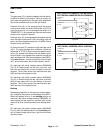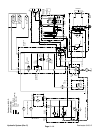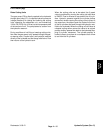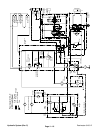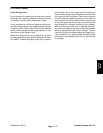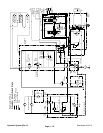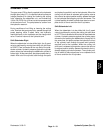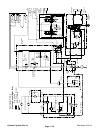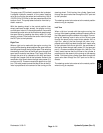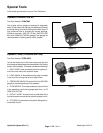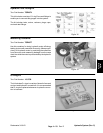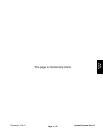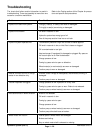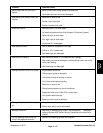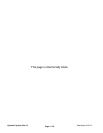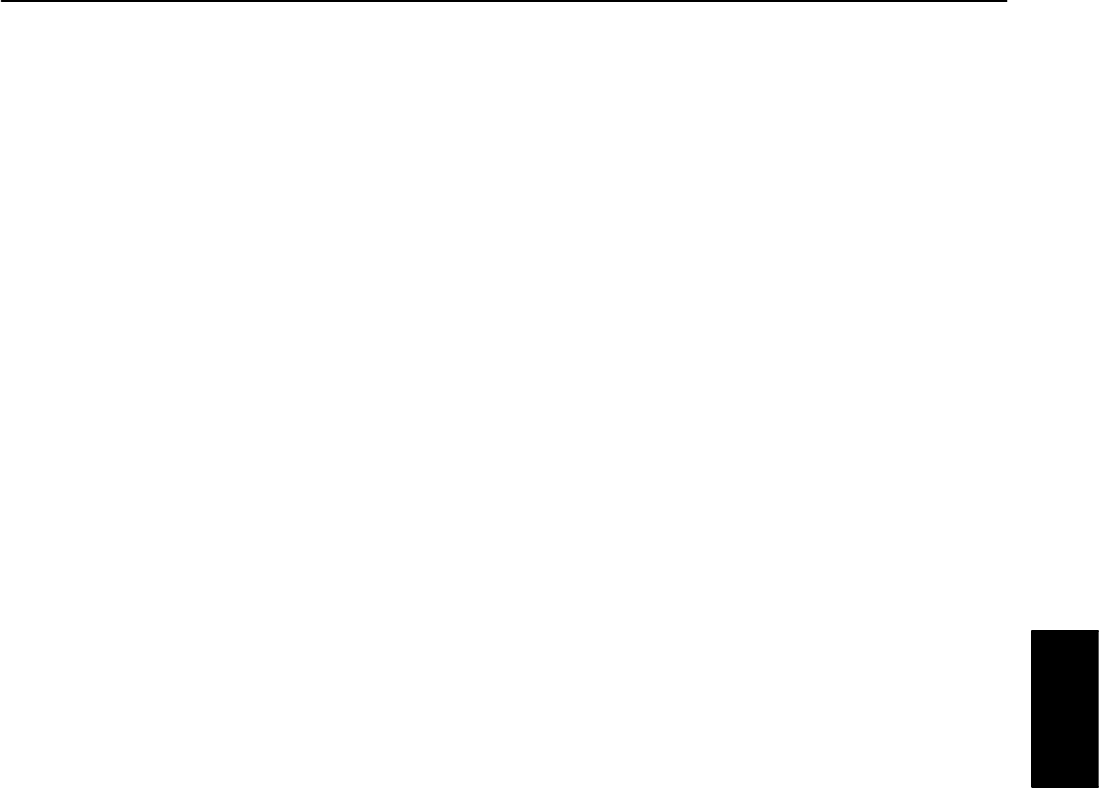
Reelmaster 3100−D Hydraulic System (Rev. C)
Page 4 − 21
Steering Circuit
The gear pump (P2) is directly coupled to the hydrostat.
It supplies hydraulic pressure to the power steering
valve for turning the rear wheel and maintaining 100 to
150 PSI (6.9 to 10.0 Bar) to the low pressure side of the
traction circuit. The pump takes its suction from the hy-
draulic reservoir.
With the steering wheel in the neutral position (rear
wheel positioned straight ahead), the engine running,
and the spool valve is in the center position, flow enters
the steering control valve at the IN port and goes through
the spool valve by−passing the rotary meter (V1) and
steering cylinder. Flow leaves the control valve through
the OUT port to the hydrostat.
Right Turn
When a right turn is made with the engine running, the
turning of the steering wheel positions the spool valve so
that flow goes through the top of the spool. Flow entering
the steering control valve at the IN port goes through the
spool and is routed to two places. First, most of the flow
through the valve is by−passed out the AUX port back
through the 2−spool valve to the hydrostat. Second, the
remainder of the flow is drawn through rotary meter (V1)
and out port (R). Pressure retracts the piston for a right
turn. The rotary meter ensures that the oil flow to the cyl-
inder is proportional to the amount of the turning on the
steering wheel. Fluid leaving the cylinder flows back
through the spool valve then through the OUT port and
to the hydrostat.
The steering control valve returns to the neutral position
when turning is complete.
Left Turn
When a left turn is made with the engine running, the
turning of the steering wheel positions the spool valve so
that flow goes through the bottom of the spool. Flow en-
tering the steering control valve at the IN port goes
through the spool and is routed to two places. As in a
right turn, most of the flow through the valve is by−
passed out the AUX port back through the 2−spool valve
to the hydrostat. Also like a right turn, the remainder of
the flow is drawn through rotary meter (V1) but goes out
port (L). Pressure extends the piston for a left turn. The
rotary meter ensures that the oil flow to the cylinder is
proportional to the amount of the turning on the steering
wheel. Fluid leaving the cylinder flows back through the
spool valve then through the OUT port and to the hy-
drostat.
The steering control valve returns to the neutral position
when turning is complete.
Hydraulic
System



